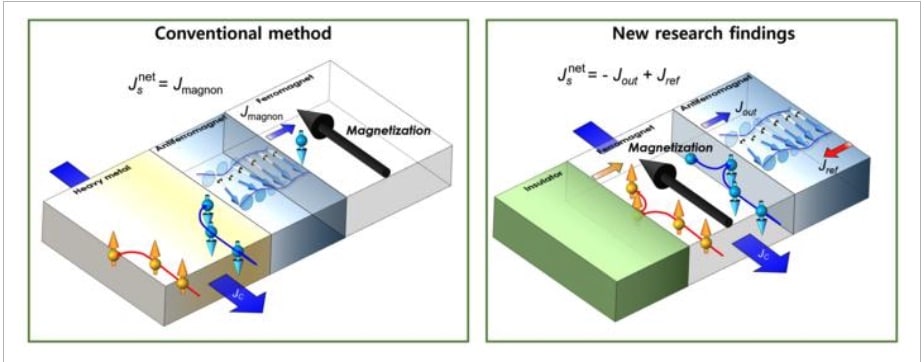Breakthrough triples memory switching efficiency, paving the way for ultra-low-power computing. This is a paradigm shift story. For years, spin loss was the enemy of spintronics; now, it’s the fuel. That inversion of logic, waste turned into power, makes this not just a physics result, but an engineering philosophy that could ripple through the entire AI hardware field.
What was once wasted energy may soon power the next revolution in computing. A team led by the Korea Institute of Science and Technology (KIST), with collaborators at DGIST and Yonsei University, has discovered a way to turn “spin loss”, long seen as wasted energy in spintronic devices, into a valuable power source for memory and AI chips.
The results, published in Nature Communications (July 2025), demonstrate that harnessing spin loss can increase magnetic memory switching energy efficiency by up to three times, offering a pathway to ultra-low-power semiconductors that could transform the future of AI, neuromorphic computing, and edge computing.
From Waste To Resource
Spintronics, a technology that utilizes the spin of electrons (in addition to their charge) to encode information, is central to next-generation memory and logic devices. Traditionally, however, flipping magnetization —the process that writes or erases digital bits —requires high electrical currents. Much of this current is wasted as “spin loss,” a dissipation that has been considered a significant roadblock to efficiency.
The KIST-led team turned this thinking on its head. They demonstrated that spin loss itself can generate a reaction force strong enough to flip the magnetization. Counterintuitively, the more spin that is “lost,” the easier it becomes to switch the state, an inversion of conventional wisdom that redefines dissipation as a resource.
“Until now, the field of spintronics has focused only on reducing spin losses,” explained Dr. Dong-Soo Han, senior researcher at KIST. “We have presented a new direction by using the losses themselves as energy to induce magnetization switching.”
Proof Of Principle
The team built simple device structures pairing ferromagnetic metals with antiferromagnetic insulators. In these systems, quantized spin waves (magnons) dissipated energy in a way that generated sufficient torque to reverse magnetization, without requiring exotic materials or complex fabrication.
The experiments demonstrated:
- Up to 3× higher energy efficiency in magnetization switching
- Deterministic operation at a lower current
- Compatibility with existing semiconductor processes
- Scalability for miniaturization and integration
Implications For AI & Beyond
By reframing spin loss as a design tool, this breakthrough opens a new paradigm in spintronics. Instead of fighting energy dissipation, engineers may deliberately enhance it to reduce power demands.
This is particularly significant for AI workloads, where memory and computation are both energy-intensive. The technology could accelerate the development of:
- Ultra-low-power AI chips
- Neuromorphic and probabilistic processors
- Next-gen memory and logic devices for edge computing
The researchers believe this principle will become a cornerstone for scalable, energy-efficient information technologies.
“We plan to develop ultra-small, actively low-power AI semiconductor devices based on this discovery,” said Dr. Han. “They can serve as the foundation for ultra-low-power computing technologies that are essential in the AI era.”


